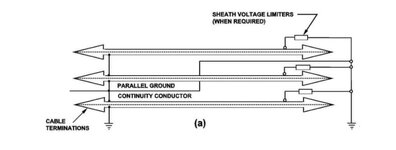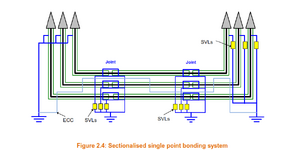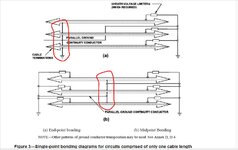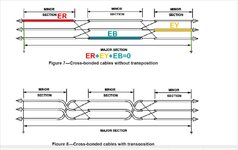rockman7892
Electrical
I know that the NEC requires additional Equipment Ground Conductors (ECG's) to be run with any feeders between equipment and Supply Side Bonding Conductors (SSBJ) to be run between transformers of separately derived system and downstream equipment.
My question is in a HV substation environment where a ground grid is typically in place to carry fault current are either of these grounding methods required in addition to the ground grid.
For example between a substation transformer secondary that cable feeds over to an MV switchgear lineup, is an additional grounding conductor required to be ran along with secondary feeder cables?
If the switchgear inside of substation feeds to locations outside of substation are Equpment ground conductors required to be run with these feeders? Even if location of downstream equipment has ground grid that is interconnected to substation?
My question is in a HV substation environment where a ground grid is typically in place to carry fault current are either of these grounding methods required in addition to the ground grid.
For example between a substation transformer secondary that cable feeds over to an MV switchgear lineup, is an additional grounding conductor required to be ran along with secondary feeder cables?
If the switchgear inside of substation feeds to locations outside of substation are Equpment ground conductors required to be run with these feeders? Even if location of downstream equipment has ground grid that is interconnected to substation?





